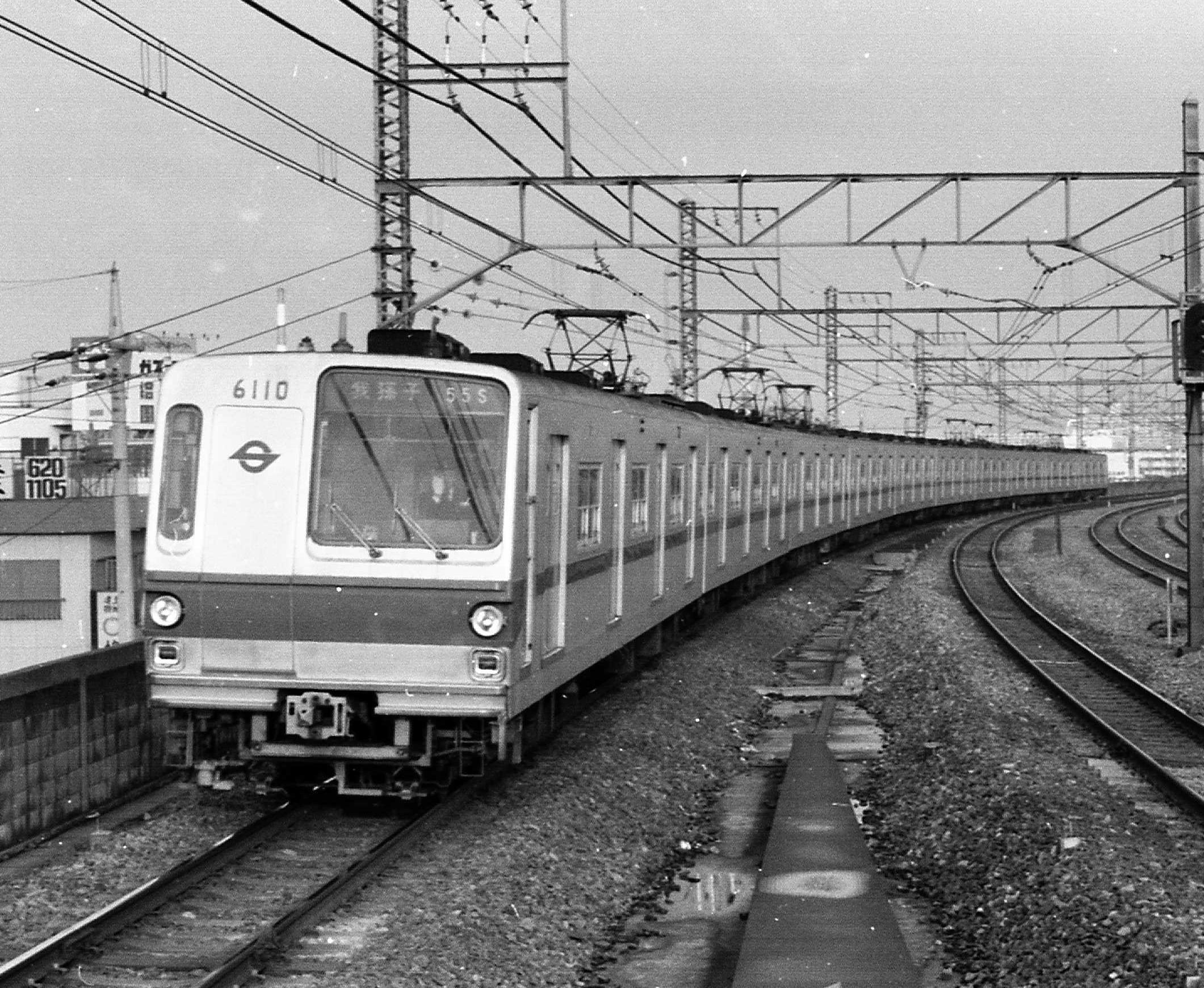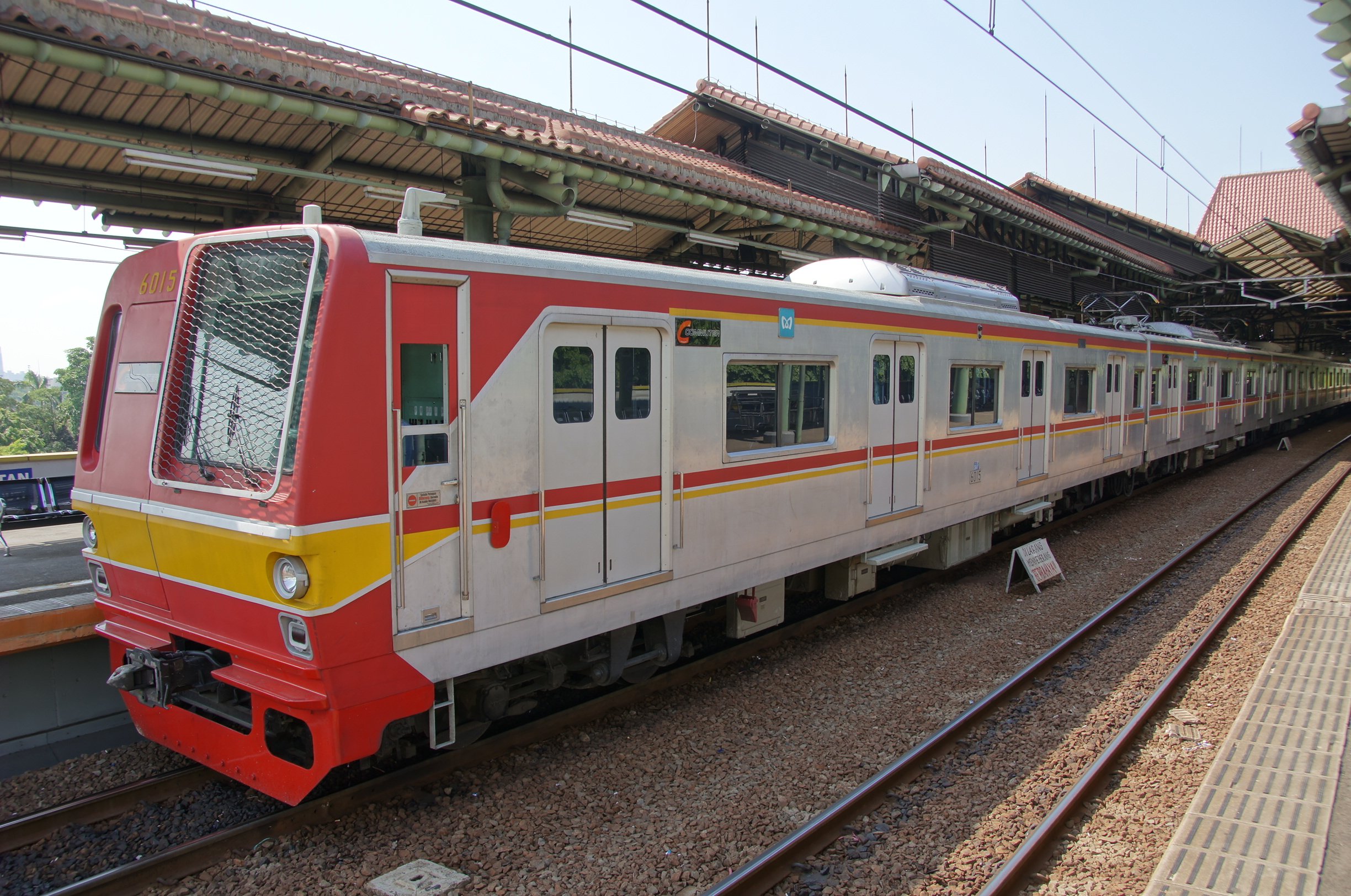Tokyo Metro 6000 series on:
[Wikipedia]
[Google]
[Amazon]
The was an
File:Tokyo Metro 6000-3 inside.jpg, Interior of the three-car prototype
File:Inside of TRTA 6000.jpg, Interior of a typical Tokyo Metro 6000 series train
File:1972 Laurel prize.JPG, Plaque of the 1972 Laurel Prize awarded to the 6000 series
 The TRTA 6000 series won the 1972
The TRTA 6000 series won the 1972

 A number of 6000 series sets have been shipped to
A number of 6000 series sets have been shipped to
 The three-car prototype set 6000, used on the Kita-Ayase branch line until 2014, is used as a staff training unit at Shin-Kiba Depot in Koto, Tokyo.
The three-car prototype set 6000, used on the Kita-Ayase branch line until 2014, is used as a staff training unit at Shin-Kiba Depot in Koto, Tokyo.
File:TM6000 air conditioning(Remodeling car).jpg, Air-conditioning for the 6000 series; the fan was used for air circulation before the retrofitting of air-conditioning.
File:Tokyo metro 6000 kei jumper-coupler.JPG, Jumper coupler for the 6000 series
File:Tokyo Metro 6000-1.jpg, The prototype of the 6000 series, which was used on the Ayase branch
File:Tokyometro6000-FS378.jpg, FS378 bogie for the 6000 series
File:Tokyometro6000-FS523.jpg, FS523 bogie for the 6000 series
File:Tokyometro6000-H-CHP.jpg, Chopper control as used on the 6000 series
File:Tokyometro6000-M-VVVF1.jpg, VVVF control as used on the 6000 series
File:Tokyo Metro 6000-1 MP.JPG, Builder's plate on the 6000 series prototype
File:Tokyo Metro 6102F 6002 Preserved.jpg, A 6000 series unit bearing the farewell run decals, July 2019
Tokyo Metro Chiyoda Line 6000 series information
{{KAI Commuter trainsets Electric multiple units of Japan 6000 series Kawasaki multiple units Nippon Sharyo multiple units Train-related introductions in 1971 Electric multiple units of Indonesia Kinki Sharyo multiple units Tokyu Car multiple units 1500 V DC multiple units of Japan
electric multiple unit
An electric multiple unit or EMU is a multiple-unit train consisting of self-propelled carriages using electricity as the motive power. An EMU requires no separate locomotive, as electric traction motors are incorporated within one or a numbe ...
(EMU) train type operated by the Tokyo subway operator Tokyo Metro
The is a major rapid transit system in Tokyo, Japan, operated by the Tokyo Metro Co. With an average daily ridership of 6.84 million passengers, the Tokyo Metro is the larger of the two subway operators in the city; the other being the Toe ...
on the Tokyo Metro Chiyoda Line
The is a subway line owned and operated by Tokyo Metro in Tokyo, Japan. On average, the line carries 1,447,730 passengers daily (2017), the second highest of the Tokyo Metro network, behind the Tozai Line (1,642,378).Kereta Commuter Indonesia
PT Kereta Commuter Indonesia (trading as KAI Commuter, abbreviated as KCI or KAIC) is a subsidiary of the Indonesian national railway company PT Kereta Api Indonesia (KAI) which manages commuter rail services. Initially founded as an operator of ...
following their withdrawal in Japan.
The trains have 20 m aluminium 4-door cars, and are used on the Chiyoda Line, as well as Odakyu Odawara Line
, commonly known as Odakyū, is a major railway company based in Tokyo, Japan, best known for its ''Romancecar'' series of limited express trains from Tokyo to Odawara, Kanagawa, Odawara, Enoshima, Tama New Town, and Hakone, Kanagawa, Hakone.
T ...
, and Joban Line (all-stations "local" services). The sole three-car set was used on the Chiyoda Line Kita-Ayase branch line.
Fleet
* 6000: 1st prototype (1968) * 6101: 2nd prototype (1969) * 6102–6121: full production 1st–3rd full-production batch type * 6122–6135: full production 4th–7th full-production batch type , the remaining fleet still operating in Japan consisted of 2 ten-car sets (sets 02 and 30). The 6000 series was scheduled for its final commercial operation on 13 October 2018. They were finally retired from service on 11 November 2018, after their final seasonal run. The last trainset retired was Set 30. It was shipped to Jakarta, Indonesia at the end of 2018.Formations
Trains are formed as follows, with car 1 at the southern end.Set 01
Cars 1 and 3 each have one lozenge-typepantograph
A pantograph (, from their original use for copying writing) is a mechanical linkage connected in a manner based on parallelograms so that the movement of one pen, in tracing an image, produces identical movements in a second pen. If a line dr ...
, and cars 5 and 9 each have two.
Sets 02–21
Cars 2, 5, and 9 each have two lozenge-type pantographs.Sets 22–35
Cars 3, 7, and 9 each have two lozenge-type pantographs.Set 60
Cars 1 and 2 each have one lozenge-type pantograph.Interior
History
 The TRTA 6000 series won the 1972
The TRTA 6000 series won the 1972 Laurel Prize
The is an award presented annually in Japan since 1961 by the Japan Railfan Club. It is awarded for railway vehicles that entered service in the previous year and voted by the selection committee as having the most outstanding functional and des ...
from the Japan Railfan Club.
Refurbishment
The fleet was retro-fitted with air conditioning between 1988 and 1994. The fleet then underwent a programme of refurbishment between 1988 and 2007.Retirement
The 6000 series trains have been in service since 1971, and have begun to show their age. In the 2010's, Tokyo Metro thought the 6000 series were becoming unreliable. As of 2018, they have been replaced by the 16000 series.Resale to Indonesia
 A number of 6000 series sets have been shipped to
A number of 6000 series sets have been shipped to Kereta Commuter Indonesia
PT Kereta Commuter Indonesia (trading as KAI Commuter, abbreviated as KCI or KAIC) is a subsidiary of the Indonesian national railway company PT Kereta Api Indonesia (KAI) which manages commuter rail services. Initially founded as an operator of ...
in Jakarta, Indonesia, as listed below.
VVVF refurbished sets were shipped to Indonesia from 2016, with the first three sets arrived at the Port of Tanjung Priok in Jakarta on 29 July 2016.
The earlier chopper-controlled sets run as eight-car formations, while the refurbished VVVF-controlled sets operate as ten-car formations.
Training set
 The three-car prototype set 6000, used on the Kita-Ayase branch line until 2014, is used as a staff training unit at Shin-Kiba Depot in Koto, Tokyo.
The three-car prototype set 6000, used on the Kita-Ayase branch line until 2014, is used as a staff training unit at Shin-Kiba Depot in Koto, Tokyo.
Fleet history
The individual set histories are as shown below.Related development
Both theTokyo Metro 7000 series
The is an electric multiple unit (EMU) train type operated by the Tokyo subway operator Tokyo Metro in Tokyo, Japan, between 1974 and 2022. The design is based on the earlier Tokyo Metro 6000 series trains used on the Tokyo Metro Chiyoda Line.
...
and the Tokyo Metro 8000 series
The is an electric multiple unit (EMU) train type operated by Tokyo subway operator Tokyo Metro on the Tokyo Metro Hanzomon Line in Tokyo, Japan, since 1981.
A total of 190 cars (19 ten-car sets) were built between 1980 and 1994 by Kawasaki H ...
were based on the 6000 series for the Yurakucho Line, Fukutoshin Line, and the Hanzomon Line. The cab car was inspired by Bay Area Rapid Transit
Bay Area Rapid Transit (BART) is a rapid transit system serving the San Francisco Bay Area in California. BART serves 50 stations along six routes on of rapid transit lines, including a spur line in eastern Contra Costa County which uses ...
(BART) in the San Francisco Bay Area, thus created the A-cars as the end cars only.
Gallery
References
External links
Tokyo Metro Chiyoda Line 6000 series information
{{KAI Commuter trainsets Electric multiple units of Japan 6000 series Kawasaki multiple units Nippon Sharyo multiple units Train-related introductions in 1971 Electric multiple units of Indonesia Kinki Sharyo multiple units Tokyu Car multiple units 1500 V DC multiple units of Japan